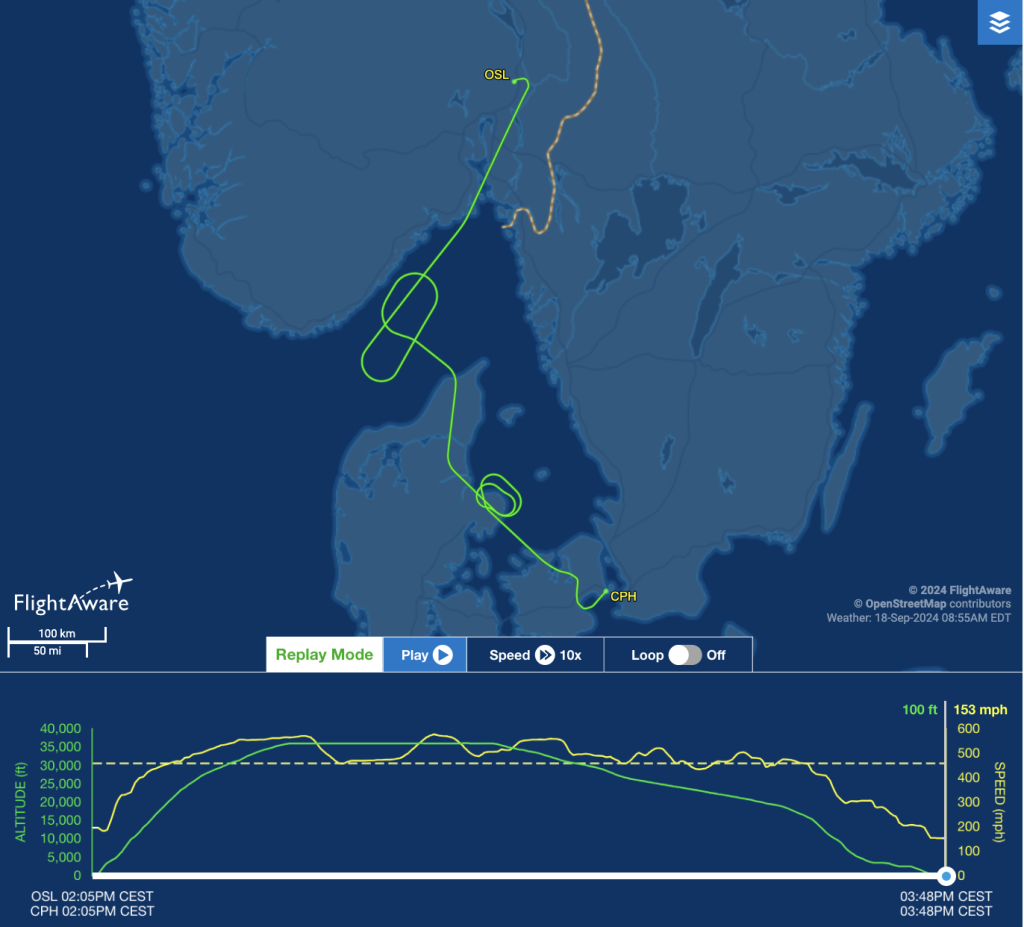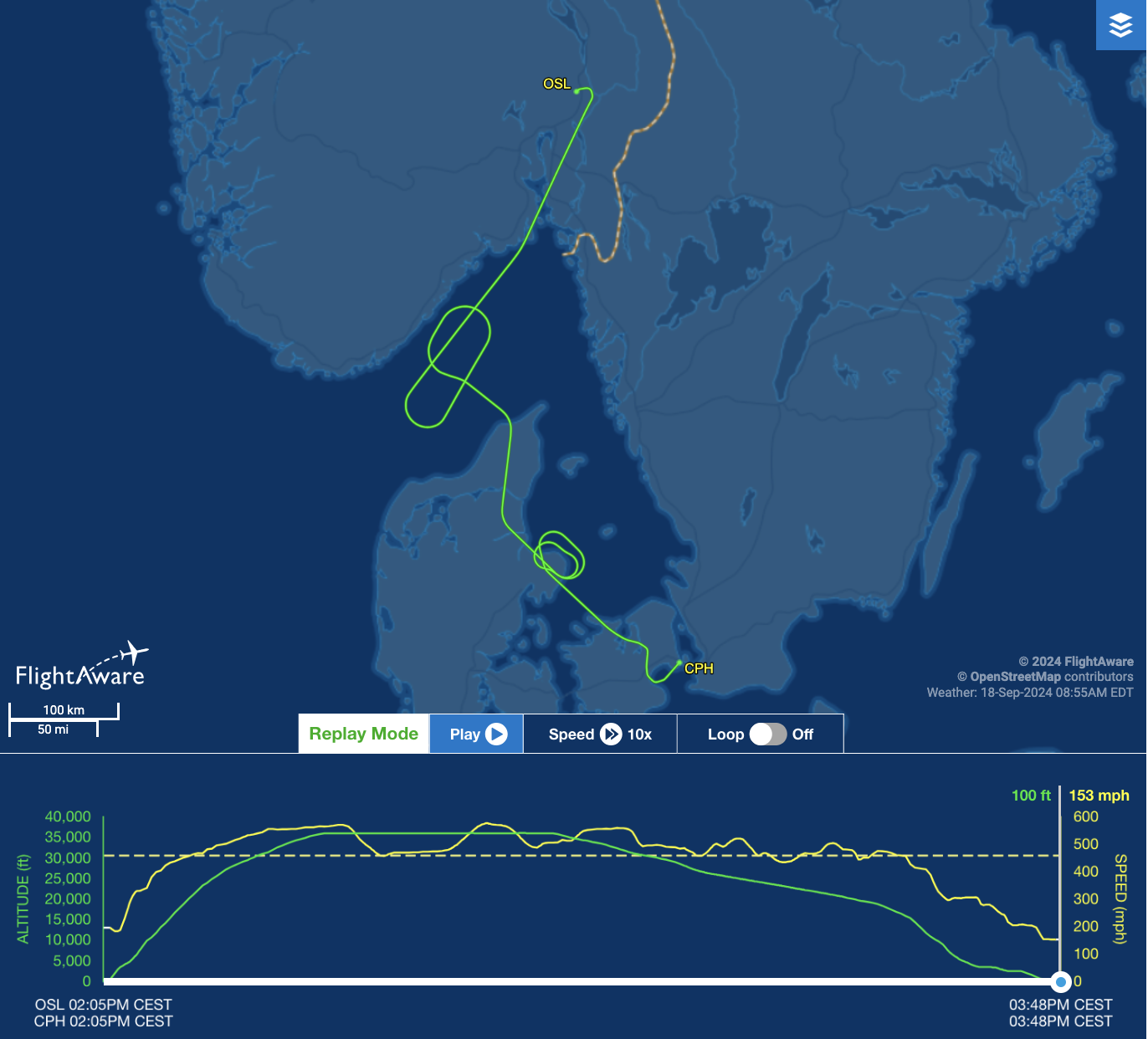When we think about in-flight incidents, we typically imagine turbulence, technical issues, or perhaps even an unruly passenger. But a mouse sighting leading to a flight diversion? That’s not something you hear about every day. Yet, this is precisely what happened on SAS flight SK-4683 from Oslo to Malaga—a journey that took an unexpected detour to Copenhagen due to an adventurous rodent.
The Incident
It all began innocently enough during the meal service, when a passenger, perhaps looking forward to their in-flight meal, opened their food tray and was greeted not by a sandwich or a salad, but by a small, furry stowaway. The mouse, evidently as surprised as the passengers, made a daring escape and vanished into the cabin. As unusual as it sounds, the sighting was confirmed by the cabin crew and other passengers, turning what was supposed to be a routine flight into a funny scene out of a comedy.
The captain, faced with an unprecedented situation, made the final decision to divert the aircraft to Copenhagen. While this might seem like an excessive reaction at first glance, the reality is that the presence of a mouse on board an aircraft poses several potential hazards that must be considered.
Why Divert?
- The Hazard Factor: While a mouse may seem harmless, the potential for damage is significant. A mouse on the loose could theoretically access hard-to-reach parts of the aircraft, including the avionics bay. Although access to this area is not easily possible in-flight due to closed hatches, there are other sensitive areas the mouse could reach, such as the ventilation and air conditioning systems, power distribution in seats, and even the electrical wiring or plumbing in the toilets. The risk of the mouse gnawing through cables, leading to data corruption or loss of system redundancy, is a serious concern. Furthermore, mouse droppings could contaminate food supplies and compromise hygiene standards on board.
- Operational Considerations: The choice of Copenhagen for the diversion was strategic. As a major base for SAS, the airport offered several advantages. The airline had its own maintenance teams available, along with spare aircraft and ground staff to handle the unexpected disruption. This level of support would not have been as readily available in Malaga, where SAS has a limited presence. By diverting to Copenhagen, the airline could efficiently de-mouse the aircraft and ensure that passengers were promptly transferred to another plane to continue their journey.
- Minimizing Passenger Inconvenience: Despite the diversion, the crew acted swiftly and professionally. After landing in Copenhagen, passengers were transferred to another aircraft and resumed their journey to Malaga. The mouse-infested aircraft underwent a thorough inspection and was released back into service later, with its next scheduled flight taking off 16 hours after the diversion.
The Flight Path
A look at the flight data from FlightAware reveals that the crew first entered a holding pattern at flight level 360. This was likely a time for discussions in the cockpit but also with the dispatcher, airport and maintenance department to weigh their options. Should they return to Oslo, continue to Malaga, or divert to Copenhagen? After careful consideration, the decision to head to Copenhagen was made. Before arrival, the crew entered another holding pattern to lose altitude before making a safe approach and landing.

A Bold Decision
While it may seem overprotective to divert an entire flight due to a mouse, the decision highlights the importance of safety and operational efficiency in aviation. The presence of a rodent on board, no matter how small, poses potential risks that cannot be ignored. Moreover, the diversion to Copenhagen ensured that the issue was resolved quickly, minimizing the impact on passengers and maintaining the integrity of SAS’s operations.
In the end, flight SK-4683’s mouse incident serves as a reminder that in aviation, even the smallest problem can lead to big decisions. It also makes for a great story to tell—one that passengers will likely be recounting for years to come!

Leave a Reply